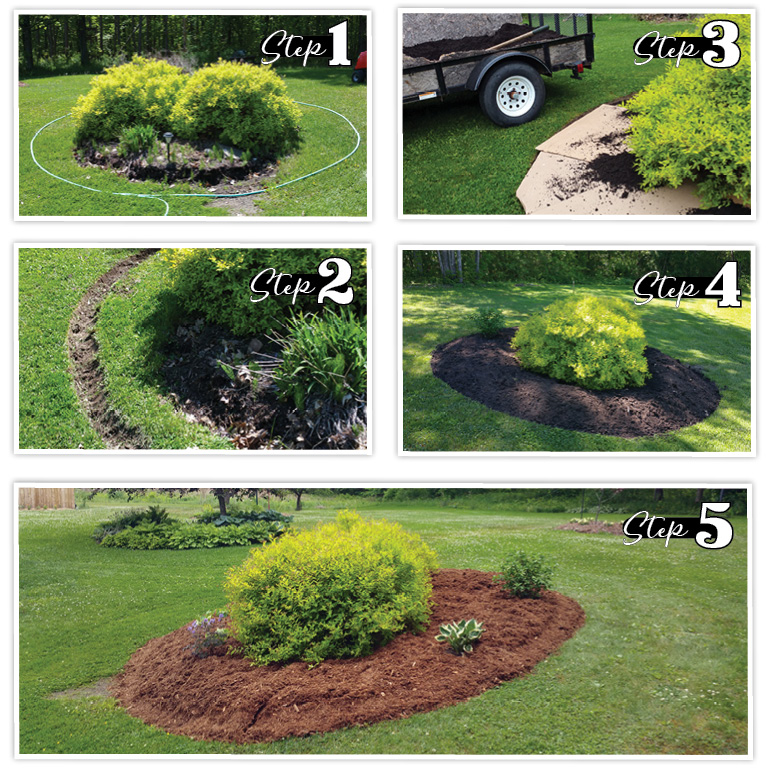Building Garden Beds
Home and outside were the places to be in 2020, and gardening became everyone’s new hobby.
It was fun to see so many learning to appreciate the simple pleasures of digging, planting and enjoying the fruits of their labor whether beautiful flowers or fresh vegetables.
One of the challenges gardeners face is creating new beds to plant. There can be a lot of groundwork to do before the first rosebush or perennial gets planted. It can be daunting, but there is a way to make this much easier with the use of cardboard. Let me show you the process. The first step is to define the outline of the new bed. I use a garden hose for this and try to avoid tight corners and angles so that I can mow right up to it, eliminating the need for trimming with a line trimmer. Anything that saves some time is a good thing.
The next step is to cut an edge or small trench around the perimeter of the new outline. A straight-bladed sod cutter is perfect for this task but a shovel can do the job. The trench should be about 5” deep and 6” wide. When it is finished there will be grass inside and outside the new edge. You’ll have the urge to remove all that sod and turn the soil over.
Resist that urge and start gathering all the cardboard you can find. Many businesses have a separate dumpster just for cardboard so it is readily available. Take the cardboard and start laying it over the grass on the inside of your new edge. Make sure to overlap the cardboard several inches so the grass or weeds won’t find a way through. You can use a razor knife to cut the cardboard to match the curves if necessary. Make sure to keep the new trench visible as you do this.
Once you have the cardboard in place over the grass and weeds, it is time to start covering it with soil. I use 8” to 12” of soil. This is a lot of soil. Thankfully, the county I live in sells soil very reasonably so I can bring it in on a small trailer. You can just buy bags from the garden center for a smaller bed but, for larger ones, you’ll want to search out a local source. The soil on top of the cardboard will smother all the grass and weeds which adds to the organic matter as it decays.
In the flower bed I made, I wasn’t planning on fully planting it right way and I want to be sure the area remains weed-free until I do. To prevent weed seeds from getting established, I covered the new soil with another layer of cardboard and added 4” of cedar mulch on top of that. You can use brown paper under the mulch instead of cardboard for this. Home improvement stores sell rolls of brown paper among the painting supplies. It is used to cover floors but is very handy as a weed barrier beneath mulch. You can plant right away by simply brushing the mulch aside, cut a hole through the brown paper and dig the planting hole. Then brush the mulch back near the base of the plant.

So there it is. I have a brand new planting bed ready to go. I planted a couple of perennials and some annuals right away but the rest is waiting for spring while I decide what I want to grow in my new bed. There is no doubt that building beds requires some work but this method has served me well and it is a lot easier that digging or roto-tilling the rock soil that my yard has been “blessed” with.
THANKS FOR THE READ!